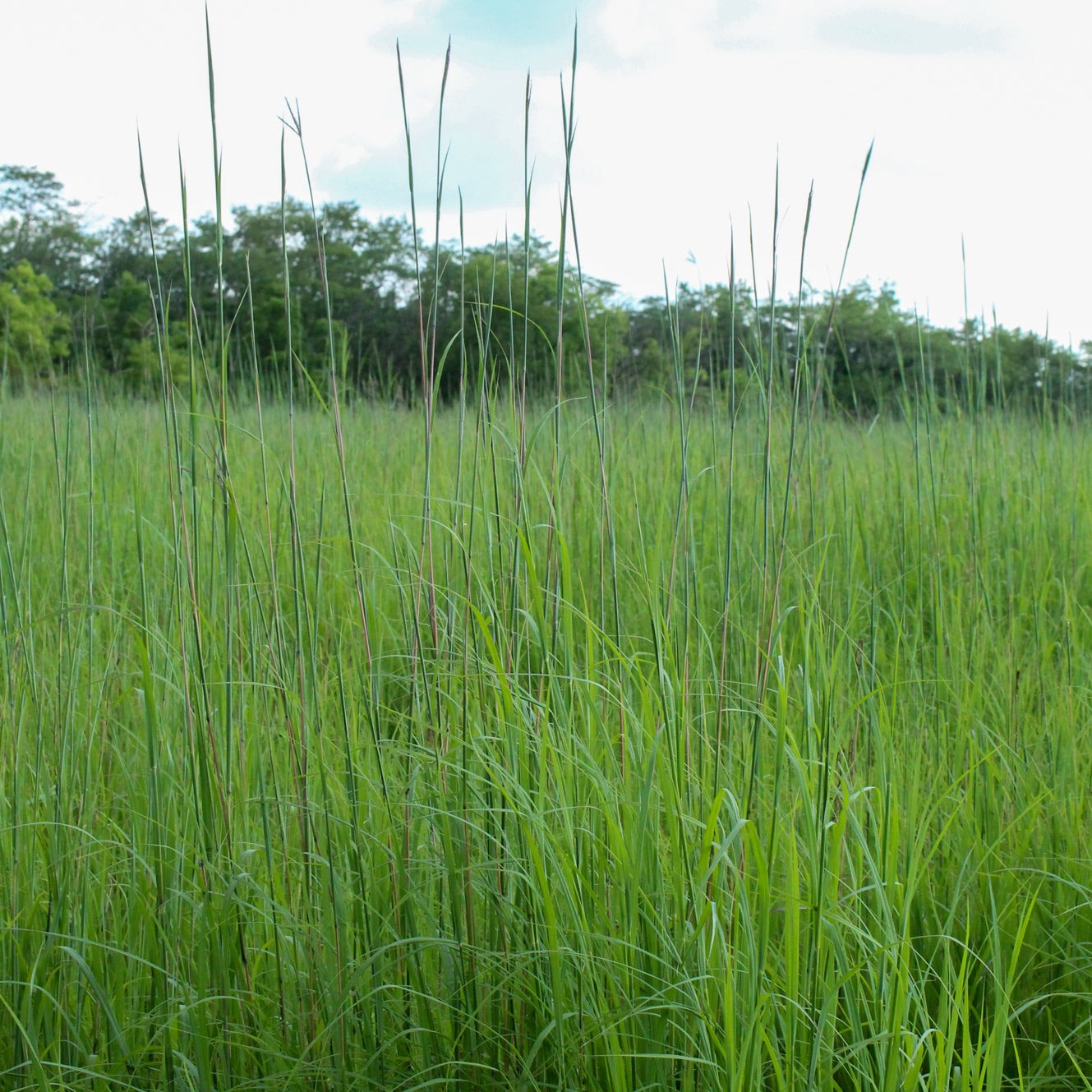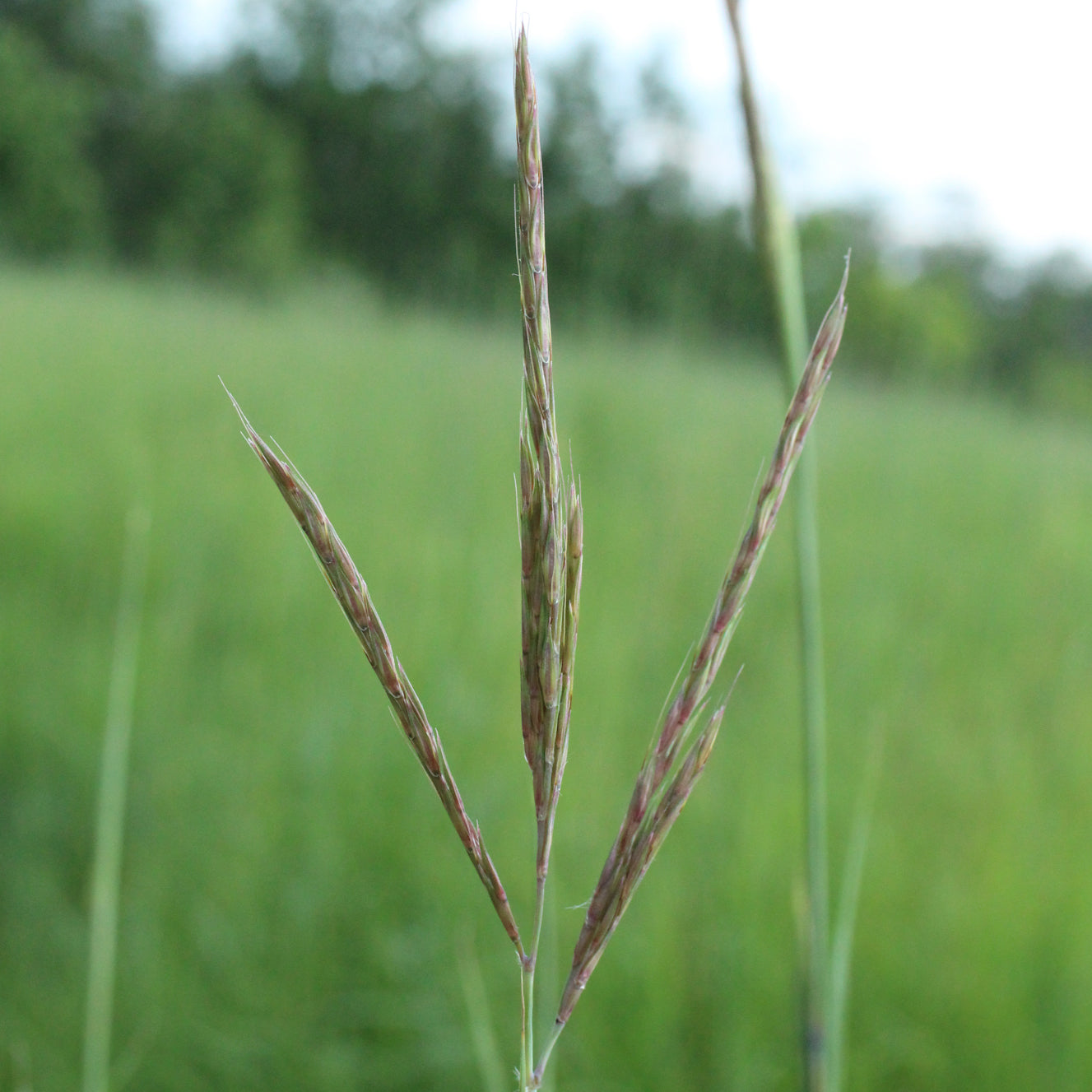Big bluestem
Andropogon gerardii
Andropogon gerardii
Couldn't load pickup availability
Sun/shade: Full sun
Soil moisture: Dry to medium
Height: 4-7'
Flowering period:
Deer resistance: High
When winds swept over the vast tallgrass prairie, big bluestem would bow in response, and waves of motion would course across the plains as though the land itself were stirring. Under the current climate, Ohio lay east of the contiguous prairie region, but small areas of prairie are nevertheless indigenous to the state. Prairie plants like big bluestem can also be found in sunny zones of our primarily forested landscape, such as woodland gaps and edges. A sod-forming grass of tall stature (3’ – 8’), big bluestem is a competitive species that spreads via rhizomes and can form a continuous groundcover. Due to its aggressive nature, big bluestem is best planted in discrete patches, or – when interspersed in a mixed planting – combined with other tall, competitive plants like switchgrass, tall coreopsis, and cup plant.
In terms of wildlife value, big bluestem is an important source of food and shelter to numerous species. The cavity-laden thatch that develops at the base of the plant shelters beetles as well as nesting and overwintering bumble bees. The plant’s dense stems offer the perfect cover to nesting grassland birds, such as sparrows and meadowlarks. During the fall and winter, birds and small mammals forage upon the ground for big bluestem’s seed, and in turn serve as prey to Cooper’s hawks and red-tailed hawks. Growing best under full sun in moderately wet to moderately dry soils, big bluestem is a majestic species that can foster important and fascinating wildlife interactions in your very own yard.
Photos by Ashley Keesling.



